MEA Air Quality Monitoring Market Size
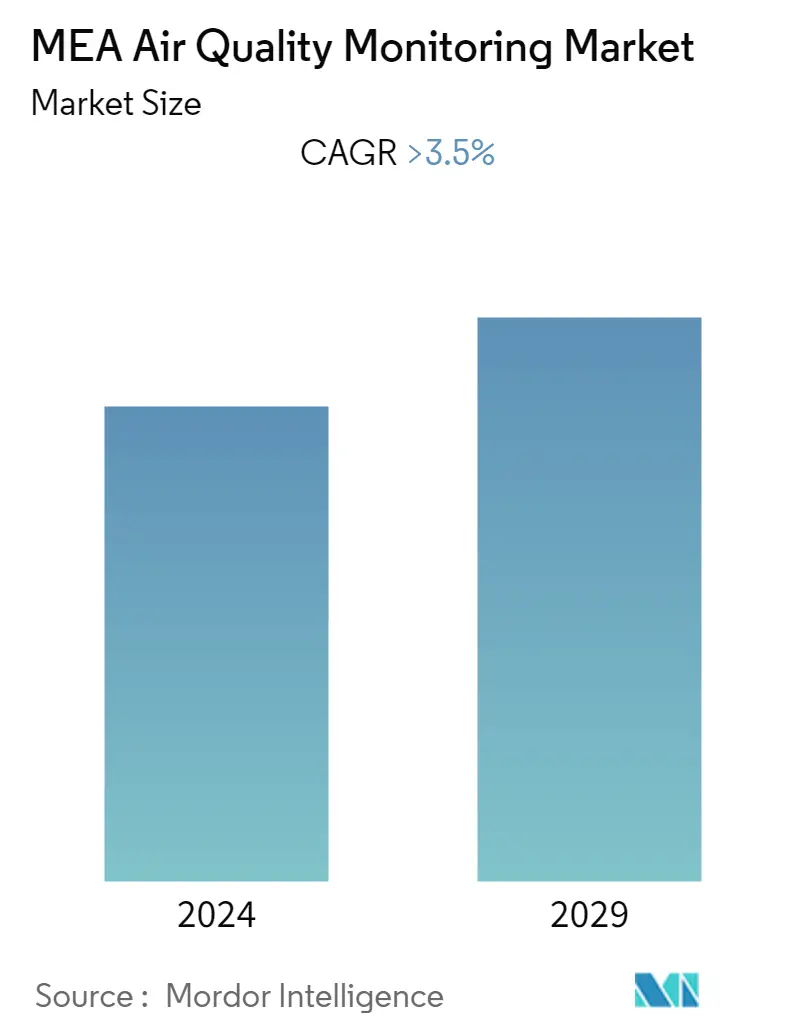
| Study Period | 2019 - 2029 |
| Base Year For Estimation | 2023 |
| Forecast Data Period | 2024 - 2029 |
| Historical Data Period | 2019 - 2022 |
| CAGR | > 3.50 % |
| Market Concentration | Low |
Major Players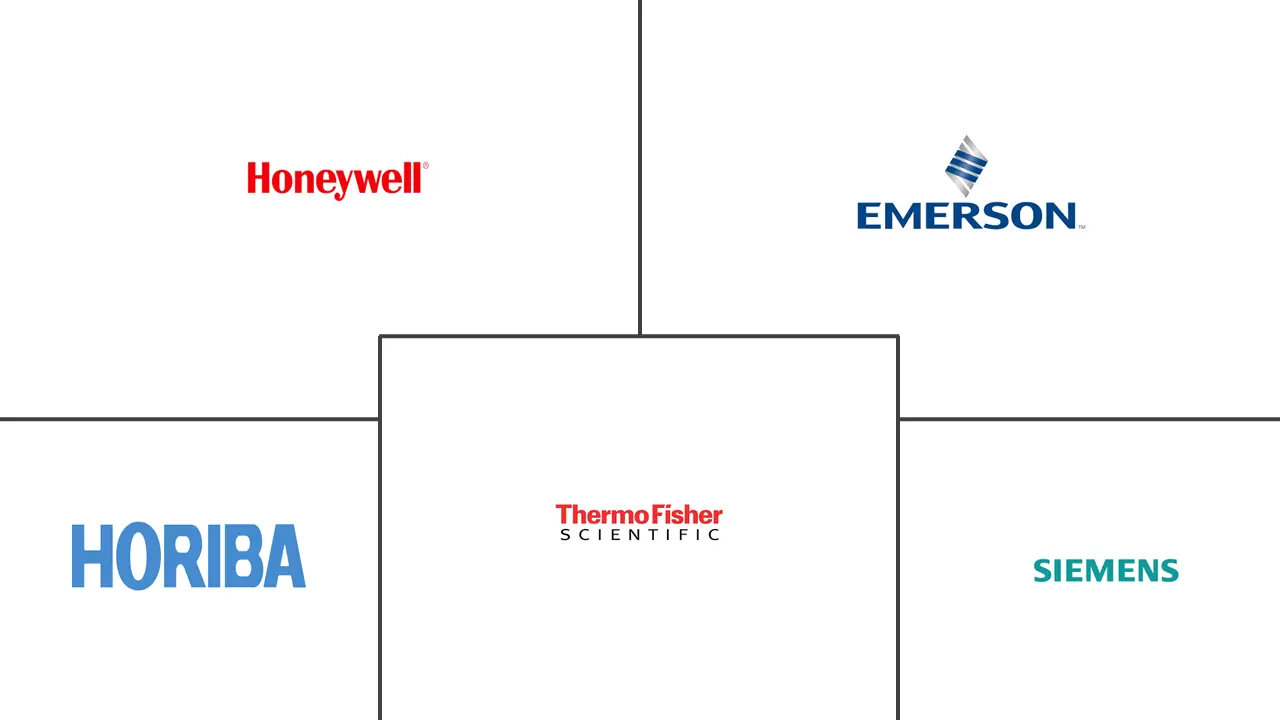
*Disclaimer: Major Players sorted in no particular order |
MEA Air Quality Monitoring Market Analysis
The Middle East and Africa Air Quality Monitoring Market is projected to register a CAGR of over 3.5% during the forecast period.
Over the medium period, increasing industrialization and urbanization are leading to a deterioration in air quality, driving the demand for air quality monitoring and purification, especially in developing countries.
On the other hand, the penetration of renewable and greener energy to support the government's net zero carbon emission policy is expected to hinder the market in the forecast period.
The technological advancements in air quality monitoring systems create enormous opportunities for the techno-development of devices and their applications.
Saudi Arabia is expected to dominate the Middle East and Africa Air Quality Monitoring market as the country holds the majority share in primary energy consumption.
MEA Air Quality Monitoring Market Trends
The Outdoor Monitor Segment is Expected to be the Fastest growing Segment
The outdoor air quality monitoring systems measure the concentration levels of pollutants, suspended particles, humidity, and temperature outside air, i.e., in open spaces. They detect the levels of pollutants like CO2, O3, NO2, SO2, formaldehyde (HCHO), total volatile organic compounds (TVOC), etc.
Chad had an average PM2.5 concentration of 75.9 micrograms per cubic meter of air (µg/m3) in 2021, making it one of the most polluted countries in the world. This was almost 40 µg/m3 more than the average PM2.5 concentrations in the United Arab Emirates.
Air quality monitoring systems are majorly deployed by governments in cities and public spaces of a particular state or country. These devices are weather-resistant and must meet certain environmental tests and simulations to be confided by some building certifications.
The outdoor monitors are further segmented into portable outdoor monitors, fixed outdoor monitors, dust and particulate monitors, and AQM stations. Portable outdoor monitors are the most widely deployed globally due to their operational advantage and easy deployment.
With the increasing urbanization and more people moving to urban areas, the air pollution levels in urban areas have increased. It is estimated that by 2050, 2.5 billion more people will live in urban areas. The high population density and diverse pollution sources like industrial facilities, municipal waste generation, and transport congestion lead to an urge for better air quality monitoring and address systems.
In May 2023, The United Arab Emirates' Ministry of Climate Change and Environment (MOCCAE) updated the classification of 64 air quality monitoring stations as part of the Year of Sustainability initiative to promote community health and welfare. According to the ministry's directive issued in 2022, this reclassification was mandatory to maintain the highest environmental and climate protection standards.
Therefore, such developments are expected to give a thrust to the outdoor monitor segment of the market during the forecast period.
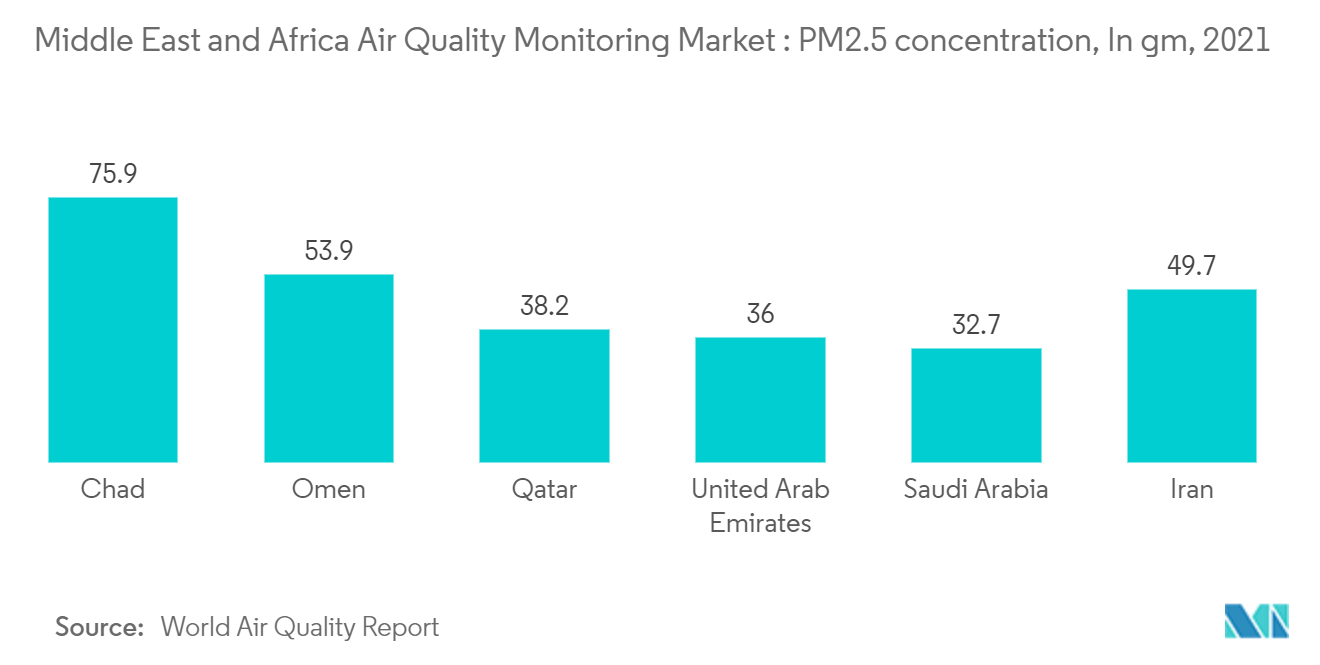
Saudi Arabia to dominate the market.
Saudi Arabia has the majority of the production and consumption of oil and gas in the Middle East and Africa region, particularly due to growing industrialization, which has increased chemical pollutants, thereby driving the air quality monitoring market in the forecast period.
Moreover, the power generation sector is the biggest consumer of air quality monitoring systems. The power production sector is increasingly switching from coal-fired power plants to gas-fired power plants and renewable power generation due to the problems associated with climate change.
In 2021, Saudi Arabia accounted for 28.6% of the total primary energy consumed across the Middle East, with 10.82 exajoules. Fossil fuels, such as oil, natural gas, and coal, accounted for a significant share of the total primary energy consumed in the region in 2021.
The number of monitors in the Middle East region climbed by 86% in 2021, mostly due to a significant increase in the number of monitors in Saudi Arabia and Israel, whose monitors comprised 73% of all in the region.
Therefore, owing to the above points, Saudi Arabia is expected to witness significant growth during the forecast period.
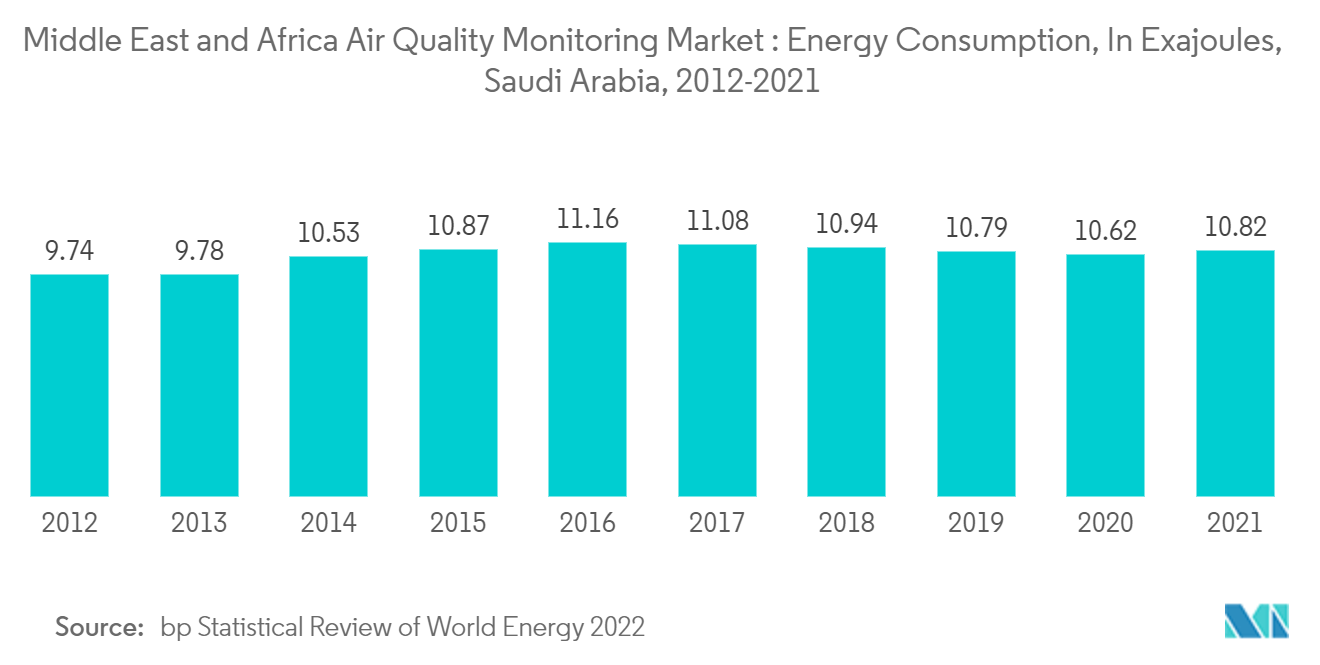
MEA Air Quality Monitoring Industry Overview
The Middle East and Africa Air Quality Monitoring Market is fragmented. Some of the major players (not in the particular order) include Siemens AG, Thermo Fisher Scientific Inc., Horiba Ltd, Emerson Electric Co., and Honeywell International Inc., among others.
MEA Air Quality Monitoring Market Leaders
-
Siemens AG
-
Thermo Fisher Scientific Inc.
-
Horiba Ltd
-
Emerson Electric Co.
-
Honeywell International Inc.
*Disclaimer: Major Players sorted in no particular order
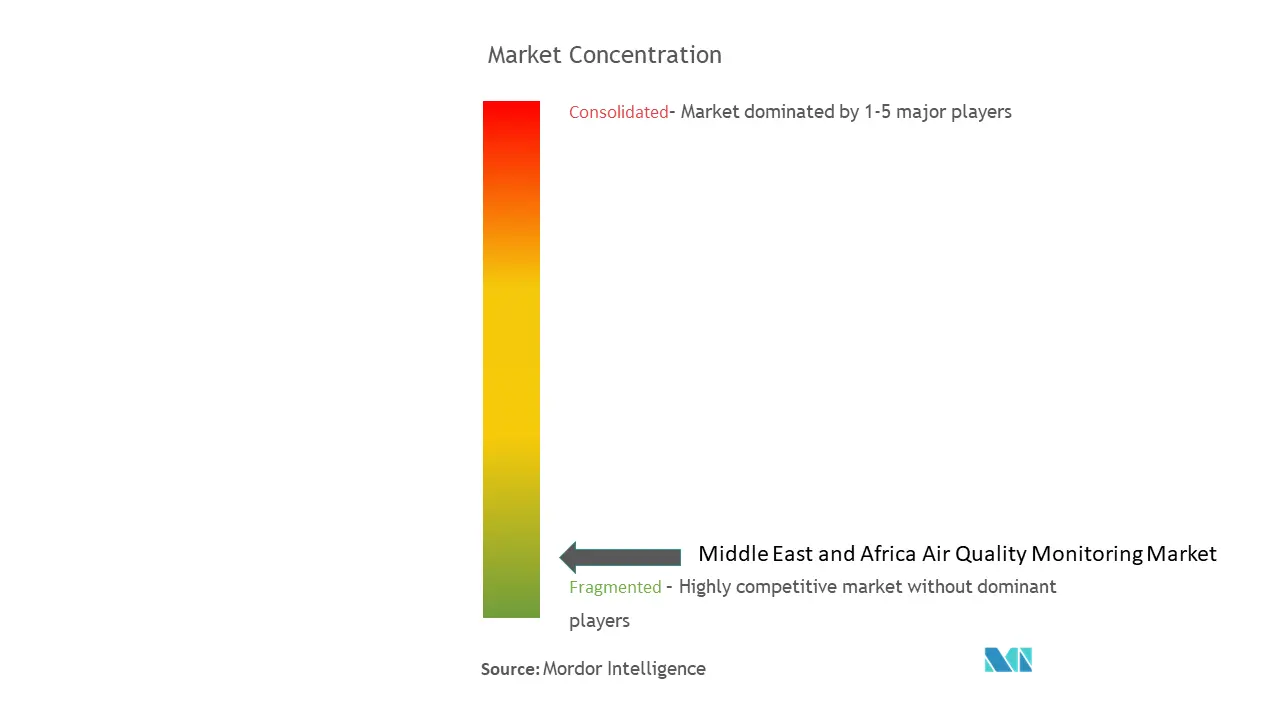
MEA Air Quality Monitoring Market News
- July 2022: Ajman Free Zone established an ambient air quality monitoring system in Gate 2 of its industrial sector in collaboration with the Municipality and Planning Department of Ajman. As part of the project, the free zone implemented cutting-edge AirSense technology to measure and evaluate the industrial area's pollution levels by current international regulations.
- June 2022: the Ministry of Climate Change and Environment (MOCCAE) launched the National Air Quality Agenda 2031, approved by the UAE Cabinet. The Agenda offers a broad framework to guide and coordinate the actions of federal, state, and local government agencies and the private sector to monitor, manage, and reduce air pollution and promote a safe and healthy environment.
- March 2022: an initiative in Abu Dhabi to improve the emirate's air quality was expanded with a network of 22 air monitors across the emirate, 20 of which are fixed while two are mobile. The Global Air Pollution and Health Technical Advisory Group of the World Health Organization has included Environment Agency Abu Dhabi (EAD) experts.
Table of Contents
1. INTRODUCTION
1.1 Scope of the Study
1.2 Market Definition
1.3 Study Assumptions
2. EXECUTIVE SUMMARY
3. RESEARCH METHODOLOGY
4. MARKET OVERVIEW
4.1 Introduction
4.2 Market Size and Demand Forecast in USD billion, till 2028
4.3 Recent Trends and Developments
4.4 Government Policies and Regulations
4.5 Market Dynamics
4.5.1 Drivers
4.5.2 Restraints
4.6 Supply Chain Analysis
4.7 Porter's Five Forces Analysis
4.7.1 Bargaining Power of Suppliers
4.7.2 Bargaining Power of Consumers
4.7.3 Threat of New Entrants
4.7.4 Threat of Substitute Products and Services
4.7.5 Intensity of Competitive Rivalry
5. MARKET SEGMENTATION
5.1 Product Type
5.1.1 Indoor Monitor
5.1.2 Outdoor Monitor
5.2 Sampling Method
5.2.1 Continuous
5.2.2 Manual
5.2.3 Intermittent
5.3 Pollutant Type
5.3.1 Chemical Pollutants
5.3.2 Physical Pollutants
5.3.3 Biological Pollutants
5.4 End User
5.4.1 Residential and Commercial
5.4.2 Power Generation
5.4.3 Petrochemicals
5.4.4 Other End Users
5.5 Geography
5.5.1 Saudi Arabia
5.5.2 United Arab Emirates
5.5.3 Rest of Middle-East and Africa
6. COMPETITIVE LANDSCAPE
6.1 Mergers and Acquisitions, Joint Ventures, Collaborations, and Agreements
6.2 Strategies Adopted by Leading Players
6.3 Company Profiles
6.3.1 Siemens AG
6.3.2 Thermo Fisher Scientific Inc.
6.3.3 Horiba Ltd
6.3.4 Emerson Electric Co.
6.3.5 Honeywell International Inc.
6.3.6 3M Co.
6.3.7 Teledyne Technologies Inc.
6.3.8 TSI Inc.
6.3.9 Agilent Technologies Inc.
- *List Not Exhaustive
7. MARKET OPPORTUNITIES AND FUTURE TRENDS
MEA Air Quality Monitoring Industry Segmentation
An air quality monitoring system is a sensor-based instrument that detects and monitors the levels of pollutants, such as sulfur dioxide, nitrous oxide, particulate matter, carbon monoxide, and volatile organic compounds, in indoor and outdoor environments.
The Middle East and Africa Air Quality Monitoring Market is segmented by Product Type (Indoor Monitor and Outdoor Monitor), Sampling Method (Continuous, Manual, and Intermittent), Pollutant Type (Chemical Pollutants, Physical Pollutants, and Biological Pollutants), End User (Residential and Commercial, Power Generation, Petrochemicals, and Other End Users), and Geography (United Arab Emirates, Saudi Arabia, and the rest of the Middle East and Africa ). The report offers the market size and forecasts in revenue (USD Billion) for all the above segments. For each segment, the market sizing and forecasts have been done based on revenue (USD Billion).
| Product Type | |
| Indoor Monitor | |
| Outdoor Monitor |
| Sampling Method | |
| Continuous | |
| Manual | |
| Intermittent |
| Pollutant Type | |
| Chemical Pollutants | |
| Physical Pollutants | |
| Biological Pollutants |
| End User | |
| Residential and Commercial | |
| Power Generation | |
| Petrochemicals | |
| Other End Users |
| Geography | |
| Saudi Arabia | |
| United Arab Emirates | |
| Rest of Middle-East and Africa |
Frequently Asked Questions
What is the current MEA Air Quality Monitoring Market size?
The MEA Air Quality Monitoring Market is projected to register a CAGR of greater than 3.5% during the forecast period (2024-2029)
Who are the key players in MEA Air Quality Monitoring Market?
Siemens AG, Thermo Fisher Scientific Inc., Horiba Ltd, Emerson Electric Co. and Honeywell International Inc. are the major companies operating in the MEA Air Quality Monitoring Market.
What years does this MEA Air Quality Monitoring Market cover?
The report covers the MEA Air Quality Monitoring Market historical market size for years: 2019, 2020, 2021, 2022 and 2023. The report also forecasts the MEA Air Quality Monitoring Market size for years: 2024, 2025, 2026, 2027, 2028 and 2029.
MEA Air Quality Monitoring Industry Report
Statistics for the 2024 MEA Air Quality Monitoring market share, size and revenue growth rate, created by Mordor Intelligence™ Industry Reports. MEA Air Quality Monitoring analysis includes a market forecast outlook to for 2024 to 2029 and historical overview. Get a sample of this industry analysis as a free report PDF download.



